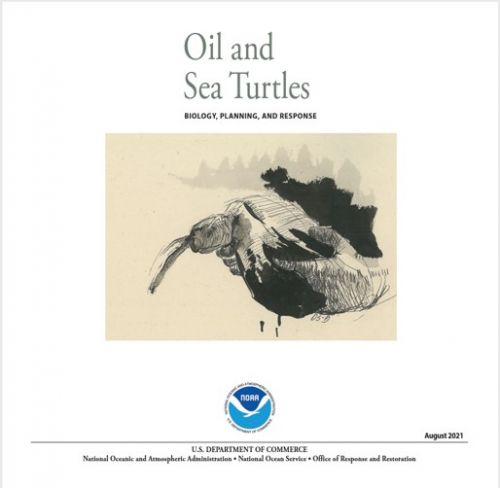New Guidance Supports Those Responding to Oiled Sea Turtles
OCT. 17, 2022 — OR&R’s Emergency Response Division recently completed an update to the guide book, Oil and Sea Turtles: Biology, Planning, and Response.
The freshly revised guide provides information on sea turtle biology and life history, and incorporates information learned from the 2010 Deepwater Horizon oil spill about the effects of oil on sea turtles. It describes oiled sea turtle veterinary care and rehabilitation techniques, sea turtle response considerations (including an overview of various on-water and shoreline cleanup techniques that might adversely impact turtles), as well as potential interventions for oiled sea turtles and nests. The guide concludes with a review of case studies where oiled sea turtles were observed.
The guide is intended for spill responders and planners, resource managers, sea turtle rehabilitators, veterinarians, and others with an interest in the continued survival and health of sea turtles.
The Oil and Sea Turtles guide is complementary to the Guidelines for Oil Spill Response and Natural Resource Damage Assessment: Sea Turtles, a joint publication from OR&R and the Office of Protected Resources. These guidelines provide an in-depth review of considerations for response and natural resource damage assessment for sea turtles, incorporate knowledge gained from previous oil spills (particularly the Deepwater Horizon spill), and provide information to aid preparations for future oil spills.
On Sept. 27, OR&R biologist Nicolle Rutherford presented an overview of the updated Oil and Sea Turtles guide at the Effects of Oil on Wildlife Conference in Long Beach, California. This event was an excellent opportunity to introduce the guide to an international audience of wildlife responders, rehabilitators, and researchers who may be involved in future oil spill responses that impact sea turtles.
To learn more about oil spills and sea turtles, visit the following OR&R resources:
 An official website of the United States government.
An official website of the United States government.

